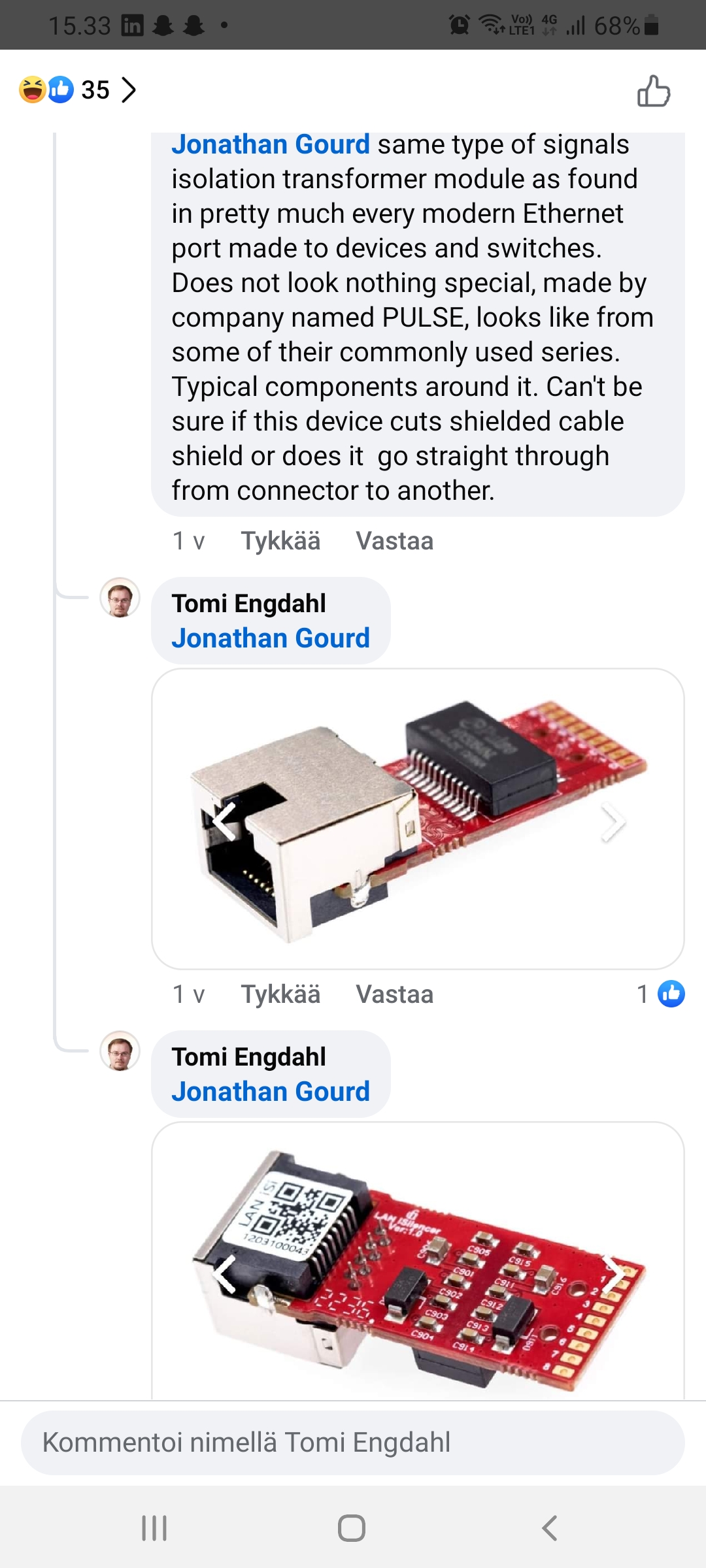LAN iSilencer Audiophile Ethernet Dongle Claims to ‘Quiet Your Network’ article says that at ‘just’ $100, it seems like a “bargain” compared to some audiophile Ethernet cables.
iFi-Audio has released the LAN iSilencer, an audiophile accessory which aims to “quiet your network.” According to the Ethernet dongle designers in Japan, this product removes digital signal interference, and thus protects your audio signals from noise. The device supports 1000BASE-T /100BASE-T /10BASE-T transmission speeds, has a shielded case, weighs 17 grams, and measures 73.5 x 19 x 16mm.
Manufacturer claims “a zero jitter memory buffer and galvanically isolated inputs.”
Based on what I saw in article, the galvanic isolation seems to be there.
But the “zero jitter memory buffer” sounds like hifi marketing bullshit (especially when this is a passive device that is not powered).
The key design features that are claimed to be of benefit to your digital audio’s 0s and 1s are “a zero jitter memory buffer and galvanically isolated inputs.” I don’t buy those zero jitter buffer claims.
On the topic of galvanic isolation, iFi-Audio says that audio signals passing through won’t suffer due to the interference of ground potential differences and AC power transients. Keep in mind that twisted pair Ethernet has already transformer isolation in the network interface and in the Ethernet switch. So with normal twisted pair Ethernet wiring is already transformer isolated on the both ends of connection, so I don’t think that adding an extra isolation transformer in on one end would do a big difference. Only application where there is a valid technical reason to add isolation transformer in the middle of cable are some medical networking applications, where the extra transformer provides safety isolation (guarantees higher isolation voltage than built in transformers around 1.5 kV)
You can get ground loop issues with Ethernet wiring only if you use shielded cable. The cable shield is normally connected straight through from connector shield to another connector shield (which are typically connected to equipment metal case). Shielded Ethernet wiring can create ground loop issues (that generally don’t affect data but but can sometimes cause other issues).
In this case the isolation device could possibly help in this problem somewhat if the IFi LAN isolator does not connect the shield on input to output. If shielded cable has ground loop issues, then a cheap proven way is to replacing the cable with unshielded will solve the Ethernet related ground loop problem immediately.
But that does not stop some companies trying to sell “magic boxes”. It doesn’t really matter whether if it technically works, or not. The over-riding question is that if the device makes an improvement to perceptible sound quality. Even if it did affect the Ethernet signal at all, which it can’t, by the time it makes it through the PHY, MAC, and TCP IP stack, there is not only no measurable effect there is definitively no effect. Zero. Just because of digital error correction. TCP has checksums on every packet.
From Let’s Make Fun Of The Audiophools Facebook group:
Chris Ripoll there seems to be just Ethernet transformers module and some capacitors in there. They will pass Ethernet signal and provide isolation without need for any external power (just like similar components built into the device and ethernet switch ports do).
The pics that Tomi linked show that it’s pure snake oil.
Image source: https://ifi-audio.com/products/lan-isilencer/
Ethernet is galvanically isolated by design. This iFi isolator had two TVS diodes, 12 ceramic capacitors, one Pulse Electronics Ethernet transformer. No “zero jitter memory buffers” of any kind. It’s totally not needed in normal usage cases because every Ethernet device is already going to have a transformer like this onboard.
Same type of signals isolation transformer module as found in pretty much every modern Ethernet port made to devices and switches. Does not look nothing special, made by company named PULSE, looks like from some of their commonly used series. Other parts are typical components used around it.
Based on pictures I can’t be sure if this device cuts shielded cable shield or does it go straight through from connector to another. If it cuts the ground between input and output, it could help to solve some ground loop problems (but has not so good external noise rejection as if the ground goes through).


1 Comment
lol beans says:
I have saved this page to my bookmarks because it includes useful information. I am quite pleased with the quality of the articles and the way they are presented. Many, many thanks for preserving such wonderful things. I am very grateful for this website.